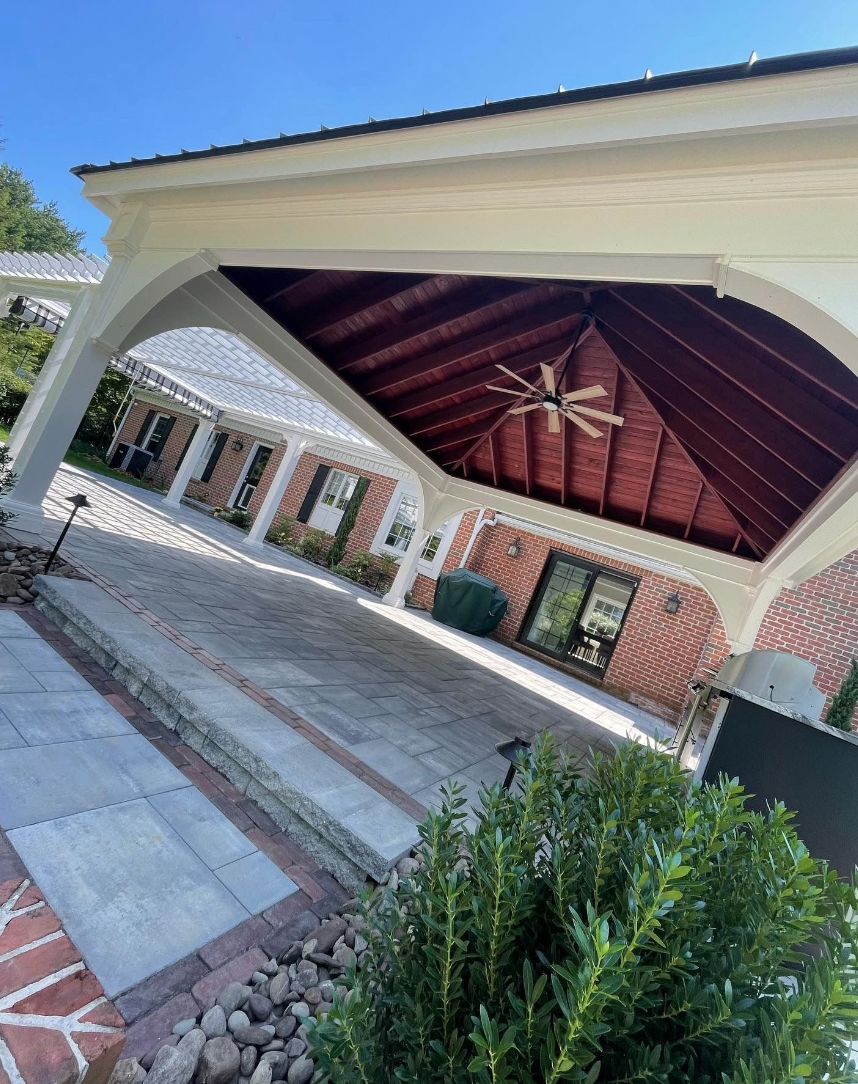Adding a pavilion to your Wyomissing or Exeter, PA, home not only elevates your outdoor living space but also creates a haven for relaxation and entertainment. Whether nestled in a lush backyard or perched on a spacious lawn, the perfect pavilion can transform your landscape into a year-round retreat. This guide will navigate through the essential considerations to help you select a pavilion that harmonizes with your lifestyle and the architectural character of your home.
Related: Here’s What Landscapers in Lebanon, PA and Leigh County, PA Can Help You With
Understanding Pavilion Styles
The style of your pavilion should complement the overall design of your house and landscape. Traditional pavilions, often characterized by their sturdy wooden beams and classic rooflines, blend seamlessly with historic or colonial-style homes. For a more contemporary setting, modern pavilions with clean lines, minimalistic designs, and materials like metal or composite can add a sleek, sophisticated touch.
Material Matters
Choosing the right materials is crucial for ensuring your pavilion withstands the variable weather conditions of our area. Wood, vinyl, and metal are popular choices, each with its own set of advantages.
Wood offers a timeless appeal and natural warmth, making it ideal for traditional and rustic designs. However, it requires regular maintenance to protect against weathering and insects.
Vinyl is low-maintenance and resistant to rot, insects, and fading, providing a clean, crisp appearance year after year.
Metal, such as aluminum or steel, offers durability and a modern look, with the added benefit of being resistant to rust and decay.
Related: Pavilion Elegance: Crafting Serene Retreats in Wescosville and Exeter, PA
Size and Location
The size of your pavilion should be in proportion to the space available and the scale of your home. A larger pavilion can accommodate outdoor dining areas, kitchens, or living spaces, making it ideal for those who love to entertain. For smaller landscapes, a more intimate pavilion can create a cozy retreat for reading or enjoying a quiet cup of coffee.
When selecting a location, consider the path of the sun throughout the day and the views you wish to capture. Placing your pavilion in a spot that receives ample afternoon shade can provide a comfortable refuge during the warmer months. Additionally, consider the pavilion's orientation in relation to your home to ensure it enhances your property's aesthetic and functional flow.
Customization Options
Customizing your pavilion allows you to tailor the structure to your specific needs and preferences. Consider incorporating features such as built-in seating, lighting, and electrical outlets to increase functionality. For added comfort, outdoor heaters, fans, or an outdoor fireplace can extend the use of your pavilion into the cooler months. Selecting the right roof style—whether it be a traditional pitched roof, a modern flat roof, or an elegant cupola—can further personalize your pavilion and make it a focal point of your landscape.
Integrating with Your Landscape
A pavilion should not only serve as a standalone feature but also integrate seamlessly with your existing landscape. Consider the surrounding flora and design elements when planning your pavilion. Incorporating natural stone walkways, water features, or complementary plantings can enhance the connection between the pavilion and the landscape, creating a cohesive outdoor living space.
Related: Your Berks County or Exeter, PA Backyard Lacking Shade? A Pavilion is Made for Shade


